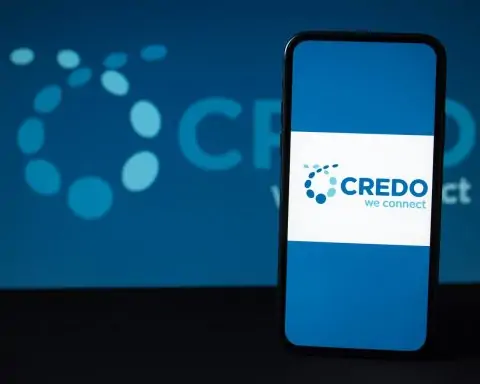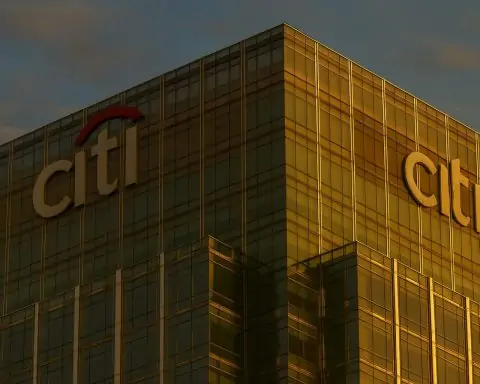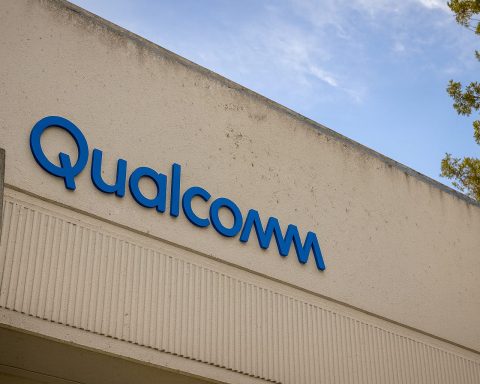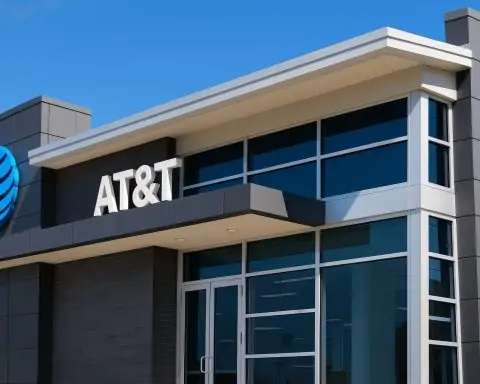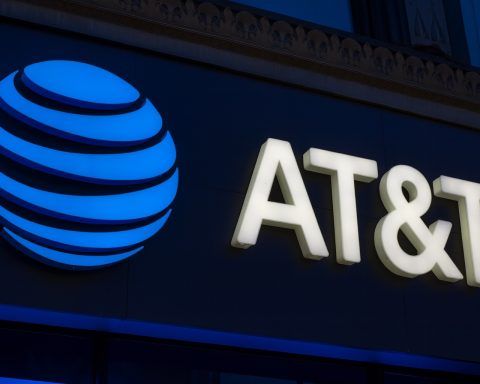- 83% of the population aged 16–74 uses the internet regularly, and about 96.7% of households have some form of internet access.
- As of 2023, about 90.4% of Albanian households have fixed broadband access, up from 58% in 2019.
- In the late 2010s, DSL accounted for around 39% of connections while FTTH/B totaled about 31%, and today fiber is expanding with gigabit plans up to 1 Gbps in urban areas such as those marketed by Vodafone Albania after acquiring Abcom.
- About 90% of fixed-line subscriptions are in urban zones, with rural share around 10%, and urban fixed broadband penetration was roughly 30% in 2021 while rural was about 8%.
- Mid-2024, Albania joined SpaceX Starlink’s service footprint; hardware kit costs about 42,500 ALL (about €418) and the monthly subscription is about 6,500 ALL (about €60), with speeds of 50–200 Mbps; by late 2024 Starlink had launched over 6,000 satellites, roughly 15% of the constellation.
- 4G LTE covers about 96% of the population, 5G began commercial service on November 25, 2024 with Tirana and Durrës among the first, and by early 2025 about 19% of users/devices have 5G access.
- January 2023 merger of One Telecommunications and Albtelecom created One Albania, yielding a two-operator market alongside Vodafone Albania.
- The National Broadband Plan 2020–2025 targets 100% broadband coverage by 2025, 50% of urban connections at 1 Gbps, and 100% rural access at least 100 Mbps by 2025, including 1 Gbps links to all schools and health centers by 2025.
- The government has advanced digital government through the e-Albania portal with hundreds of online public services since 2022, and roaming costs in the Western Balkans were eliminated starting July 2021.
- Albania’s international connectivity is strengthened by a subsea project linking Albania with Italy and Egypt, and Tirana hosts a single Internet Exchange Point with about 22% of popular content cached locally.
Internet access in Albania has transformed from a luxury to an essential utility over the past two decades. Today, over 83% of Albanians (age 16–74) use the internet regularly, and nearly 96.7% of households have some form of internet access [1]. This widespread connectivity is underpinned by a mix of fiber-optic fixed broadband, extensive mobile networks, and new satellite services. The Albanian government’s push for digital services (such as the e-Albania portal) and the nation’s aspiration to meet EU digital standards have further catalyzed improvements in infrastructure and adoption. The following report examines Albania’s internet infrastructure – from high-speed fiber lines to satellite signals – and evaluates coverage, service quality, key providers, affordability, policies, and future prospects.
Fixed-Line Broadband Infrastructure in Albania
Albania’s fixed-line broadband has seen remarkable growth in coverage and speed, especially in urban areas. As of 2023, about 90.4% of Albanian households have fixed broadband internet access (via optic fiber, cable, ADSL, etc.), a figure up slightly from the previous year [2]. This represents a dramatic rise from just a few years prior (58% of households in 2019) [3]. Fiber-optic networks are expanding rapidly, gradually replacing legacy DSL lines. In the late 2010s, DSL (often fiber-to-the-node with copper last miles) still made up around 39% of connections, but full fiber (FTTH/B) had grown to ~31% [4]. By now, fiber’s share is even higher as operators race to meet burgeoning bandwidth demand. Major providers offer gigabit-speed packages in urban centers – for example, Vodafone Albania (after acquiring cable operator Abcom) markets fiber plans up to 1 Gbps in select areas [5]. Consequently, Albania’s fixed broadband speeds have improved significantly: the median fixed download speed was ~44.6 Mbps at the start of 2023, up 42% from a year prior [6]. In some cities, average speeds are even higher – for instance, the city of Shkodër led in Q4 2023 with nearly 70 Mbps average download [7]. This leap in performance reflects ongoing upgrades of the fixed network infrastructure.
Despite these gains, fixed broadband infrastructure still skews heavily toward urban areas. Fiber and cable networks are well-developed in cities like Tirana and Durrës, but many rural and remote communities remain under-served. Overall, about 90% of fixed-line subscriptions are in urban zones, versus only 10% in rural areas [8]. In 2021, the fixed broadband penetration rate in urban areas was estimated around 30% (of population), while in rural areas it was only about 8% [9]. Mountainous terrain and high deployment costs have made rural fiber rollout less attractive to private ISPs, resulting in a persistent digital divide. Notably, half of all fixed broadband lines in the country are concentrated in the Tirana region alone [10]. To address international connectivity, Albania has also invested in backbone infrastructure: the government partnered with Hungary’s 4iG to construct a new “digital highway” subsea fiber-optic cable linking Albania with the broader Mediterranean and European network [11]. This will augment existing terrestrial and undersea links, improving redundancy and capacity for Albania’s internet backbones. In summary, Albania’s fixed broadband is on a strong upward trajectory – characterized by expanding fiber optics and better speeds – but coverage gaps persist in less populated areas.
Mobile Internet: 3G, 4G, and the 5G Rollout
Mobile networks are a cornerstone of Albania’s internet access, with widespread 3G/4G coverage and an emerging 5G era. As of early 2023, the country had about 2.27 million internet users (≈80% of the population) [12], many of whom rely on smartphones for connectivity. In fact, mobile broadband subscriptions even exceed the population – a penetration over 100% of households (due to many Albanians using multiple SIMs) [13]. Fourth-generation (4G LTE) networks blanket approximately 96% of the population [14], ensuring that virtually all communities have at least basic broadband via mobile. Albania was somewhat late to launch 4G (mid-2010s) but has since caught up; 4G is now the workhorse for nationwide data coverage. Older 3G networks exist but are gradually being phased out or refarmed as users transition to faster 4G services. According to the Electronic and Postal Communications Authority (AKEP), by 2022 Albania’s mobile broadband coverage was nearly universal in populated areas, making 4G a more immediately practical tool for universal coverage than nascent 5G [15] [16].
The mobile telecom market in Albania has consolidated recently. In January 2023, the country’s second-largest mobile operator One Telecommunications merged with the incumbent Albtelecom (which also ran a mobile network) – creating a unified company One Albania [17]. As a result, Albania now effectively has two main mobile operators: One Albania and Vodafone Albania. Vodafone has long been a market leader, while One Albania (backed by Hungary’s 4iG group) now combines the assets of both Albtelecom and the former Telekom Albania/One. This duopoly serves the entire mobile market; smaller players have either exited or operate only as MVNOs. Both One and Vodafone offer 2G/3G/4G services nationwide, and both are in the process of deploying 5G.
5G technology in Albania is at an early stage of rollout. The government (AKEP) held auctions for 5G spectrum (3.5 GHz band) in 2023, allocating licenses to the two operators [18] [19]. Commercial 5G service began in late 2024: One Albania was reported as the first to launch 5G on November 25, 2024, closely followed by Vodafone’s 5G activation in late November 2024 [20]. Initially, 5G coverage is limited to key urban areas – Tirana and Durrës were the first cities to receive 5G signals, with plans to extend coverage to other major cities and strategic locations through 2025 [21]. As of early 2025, roughly 19% of users/devices in Albania have access to a 5G signal [22] (reflecting the limited rollout so far), whereas practically all have 4G access. The 5G networks aim to deliver higher speeds and capacity, but given Albania’s late start, 5G will likely complement rather than replace 4G in the near term. Notably, to support a secure 5G rollout, Albania joined the U.S. “Clean Network” initiative – agreeing not to use Huawei/ZTE equipment in its 5G infrastructure [23]. Both One Albania and Vodafone are deploying 5G with European vendors (e.g. Ericsson) [24]. For now, 4G remains the backbone for mobile internet, offering sufficient speeds for most users. Albania’s mobile download speeds averaged around 48 Mbps in 2023 [25] – on par with regional averages – and providers like Vodafone have been recognized for strong network experience (e.g. high video streaming scores) [26]. Going forward, the introduction of 5G in more areas (and potential 5G-based fixed wireless access for home internet) is expected to further boost Albania’s connectivity, especially if it is used to reach some areas that lack fiber.
Satellite Internet Services
In a new development, satellite internet has entered the Albanian market, promising to reach areas beyond the terrestrial grid. In mid-2024, Albania was added to SpaceX Starlink’s service footprint as one of over 100 covered regions [27]. This means Albanian consumers – especially those in remote or rural locations – can now obtain high-speed internet via low-Earth orbit (LEO) satellites. Starlink service in Albania requires purchasing a satellite dish kit and subscription. The hardware costs about 42,500 ALL (Albanian lek) – roughly €418 – and the monthly subscription is around 6,500 ALL (~$60) [28]. While this price is relatively high compared to traditional ISP plans in Albania, Starlink offers unlimited data and broadband speeds (50–200 Mbps) in areas that may have had only slow DSL or even no reliable wired internet. By late 2024, Starlink had launched over 6,000 satellites (about 15% of its planned constellation) worldwide [29], extending coverage across the Balkans. For Albania’s rugged highlands and sparsely populated regions, satellite connectivity provides an alternative path to bridge the digital divide. Users simply need a clear view of the sky to connect – the Starlink kit can be installed on rooftops or even used portably for those on the move [30].
Besides Starlink, other satellite options in Albania remain limited. Traditional geostationary satellite internet (VSAT services) have existed but were niche due to high latency and cost. Starlink’s arrival brings much lower latency and higher throughput, making satellite internet more viable for mainstream uses (streaming, video calls, etc.) even in “last mile” rural contexts. The Albanian government appears open to such technologies; there were reports of administrative support for Starlink’s entry (and discussions on taxation for such services) [31] [32]. As of 2025, Starlink is the headline satellite provider, since rivals like OneWeb or Viasat have not specifically launched services in Albania yet. In summary, satellite broadband is now an important new piece of Albania’s internet landscape, mainly to serve remote users and provide backup connectivity. Its continued expansion in the region could further ensure that even the hardest-to-reach Albanian communities get online, complementing the ongoing fiber and mobile network rollouts.
Coverage and Urban–Rural Divide
A clear theme in Albania’s internet access is the contrast between well-connected urban centers and less connected rural areas. Urban areas enjoy near-ubiquitous coverage: cities have multiple fixed broadband providers (offering fiber, cable, or VDSL), and strong 4G/5G mobile signals. In Tirana – the capital and largest city – fixed broadband penetration is the highest in the country (over 43% of the population had a fixed subscription by 2021) [33], and both major operators have rolled out fiber networks across the city. Urban users thus benefit from fast home internet (often 100 Mbps or above) plus excellent mobile data availability. By contrast, many rural villages have relied on mobile networks as their primary internet source, since fixed-line deployment lags behind. While almost every Albanian household can get online somehow (either via a fixed hookup or at least a mobile data device) [34] [35], the quality and speed of that access differ widely by location. As noted, fixed broadband penetration in rural Albania was only ~5–8% (of population) in recent years [36] [37] – meaning most rural families do not have a wired internet line. Those that do often use older DSL lines with limited speeds. The vast majority of rural users thus depend on 3G/4G mobile internet, which covers nearly all populated areas [38] but can suffer from lower speeds or capacity constraints compared to urban fiber. For instance, a person in a remote village might get only a few Mbps via 4G due to network congestion or distance from cell towers, whereas a person in Tirana enjoys ultra-fast fiber at home.
The Albanian government has recognized this urban–rural digital gap as a key challenge. The National Broadband Plan 2020–2025 explicitly sets objectives to extend high-speed broadband to 100% of rural areas by 2025 [39] [40]. One goal is that all rural households should have at least 100 Mbps connectivity available (whether through fiber or wireless) by that date [41]. However, progress has been slow in some remote areas. As of 2022, Albania had not yet implemented a major state subsidy program for rural broadband expansion, leaving it to market forces which often bypass low-density areas [42]. Some incremental improvements are happening: mobile operators plan to use 5G for fixed wireless access in smaller towns, and small local ISPs have begun deploying fiber in a few rural communities [43]. Additionally, free public Wi-Fi hotspots have been introduced in many town centers and villages (the plan targeted free Wi-Fi in 50% of public spaces by 2023) [44]. Still, a substantial gap remains in service quality between urban and rural internet. Urban users report high satisfaction with speed and reliability, while rural users often cite issues like intermittent connectivity or the need to climb a hill to get a strong signal. The advent of satellite options like Starlink is one new equalizer, bringing fast internet to any location with a clear sky. Likewise, the nearly universal 4G coverage means basic internet access is available in practically all of Albania, even if not yet at urban-level speeds everywhere [45] [46]. Bridging the remaining gap will require continued investment in infrastructure (fiber backbones, base stations, etc.) and possibly government intervention to incentivize builds in under-served areas.
Internet Speeds and Service Quality
Internet speeds in Albania have improved markedly in recent years, though they vary by connection type. On fixed broadband, average speeds have risen as fiber penetrates the market. In early 2023, the median fixed download was about 44.6 Mbps [47], which marked a large year-on-year jump. By late 2023, country-wide average fixed speeds were measured above Fifty Mbps (Internet Society recorded 54.5 Mbps mean download) [48]. These averages mask the split between legacy DSL vs modern fiber: customers on new fiber lines can get 100 Mbps to 1 Gbps plans, whereas those still on ADSL or older cable might have 10–20 Mbps. Indeed, a 2019 analysis found over half of fixed subscribers then had only 4–10 Mbps bandwidth [49], but this is rapidly changing as upgrades occur. Mobile network speeds are generally lower than fixed, but still decent. The median mobile download speed was 39.3 Mbps in early 2023 [50]. Interestingly, that was a slight decrease (-9%) from the year before, possibly due to more users and strain on 4G networks [51]. However, both operators have invested in capacity and 4G/5G upgrades since then. According to OpenSignal’s 2023 report, One Albania and Vodafone now share the award for 4G download speed, each delivering roughly comparable performance, and One leads slightly in upload speed (~11.9 Mbps vs ~10.2 Mbps) [52]. Mobile latency is reasonably good (often 25–35 ms on 4G), and 5G, where available, can provide peak downloads well over 500 Mbps in tests.
In terms of quality of service, Albanian users benefit from a generally reliable core network but do encounter some issues. Urban areas experience good network stability and low downtime, whereas remote areas can suffer outages during storms or power cuts (especially affecting mobile base stations). The country operates a single Internet Exchange Point (IXP) in Tirana for local traffic, and about 22% of popular content is cached within Albania [53] – these factors help improve latency and loading times for users. International bandwidth is adequate but growing: Albania historically relied on cross-border fiber links to Italy, Greece, and North Macedonia, and the new Albania–Italy–Egypt subsea cable project will further boost international capacity [54]. The main ISPs have upgraded their backbones to handle increasing data traffic (which has surged as more people stream video, etc.). As a result, Albania’s overall internet resilience and quality have been rated middling but improving – the Internet Society gives the country a 50% “internet resilience” score (medium) and notes that the diversity of ISPs and upstream connections is quite good [55] [56]. Going forward, the spread of fiber and 5G should continue pushing speeds upward. Government targets call for half of users to have gigabit-capable connections by 2025 [57]. While that goal is ambitious, it underlines a commitment to high performance. Already, providers like One Albania tout that they are rolling out fiber-to-the-home in more cities and connecting major institutions at 1 Gbps (e.g. schools, universities, government offices) [58]. In summary, Albanians today enjoy far better internet speeds and service quality than just a few years ago, though consistency and high-end performance still depend on one’s location and chosen provider.
Internet Penetration and User Adoption
Albania has achieved a high level of internet penetration among its people. As of 2023, an estimated 83% of the population (ages 16–74) are internet users [59] [60], a figure that has been steadily climbing and is now only slightly below the European average (~90%). In raw numbers, around 2.2 million Albanians were regular internet users in early 2023 [61]. Virtually all younger Albanians (in their teens and twenties) are online, and usage is also strong up to middle-aged groups. The remaining unconnected portion tends to be the elderly or those in very remote locations with limited access. Notably, internet use is almost equal between women and men (around 82% of females and 85% of males use the internet) [62], indicating a small gender gap. Albanians primarily access the internet through mobile devices – 99.8% of internet-using individuals use a mobile/smartphone to go online [63]. Laptops and desktops are used far less (only about 27% use a computer for internet, as many households rely solely on mobile broadband) [64]. This mobile-centric usage aligns with the high mobile broadband penetration in the country.
In terms of broadband subscriptions, Albania had about 632,000 fixed broadband subscriptions by end of 2023 (roughly 22 per 100 people) [65]. This indicates many households have one fixed subscription shared among family members (since household coverage is ~90%). On the mobile side, there were over 3.3 million cellular subscriptions (including voice and data SIMs) in use, which is around 120% of the population [66]. However, a sizable share of these are prepaid SIMs or secondary SIMs; the number of unique mobile internet users is closer to 2 million. Social media adoption is also high – around 1.6 million Albanians were on social platforms (Facebook, Instagram, etc.) in 2023 [67], often using mobile data. The Albanian diaspora and remittance economy have indirectly driven internet uptake too, as families use video calls and messaging apps (WhatsApp, Viber) to stay in touch; in fact 98.7% of internet users in Albania make voice or video calls online [68]. Another catalyst for adoption has been e-government and online banking: with hundreds of public services moved online, citizens increasingly need internet access to obtain documents or pay bills. This broad uptake of internet services suggests that Albania is nearing saturation in terms of basic internet penetration, with efforts now focused on improving quality and bringing remaining offliners (mostly older or poor residents) online through affordable access programs.
Affordability of Internet Access
Internet access in Albania is relatively affordable compared to income levels, though cost can still be a barrier for low-income households. By international benchmarks, Albania meets the UN Broadband Commission’s affordability target – the price of a basic broadband package is under 2% of average monthly GNI per capita [69]. Specifically, a low-usage mobile data plan (e.g. 1.5 GB+ monthly 3G/4G service) costs about 1.3% of GNI per capita as of 2022 [70]. In practical terms, mobile operators offer very competitive prepaid bundles – for instance, 10 GB of mobile data can be as low as €10, and unlimited social media packages even cheaper [71]. Fixed broadband is also reasonably priced: a standard home internet subscription (20–50 Mbps unlimited) costs on the order of 1,500–2,000 ALL per month (approximately $15–$20) [72]. Higher-speed fiber plans (e.g. 100 Mbps or triple-play with TV) might run €25–€30 monthly, still affordable for middle-class families [73].
When compared to incomes, these prices are moderate. The average monthly salary in Albania in 2023 was around 70,000 ALL (~€600) gross [74], so a basic internet plan at 1,500 ALL is only 2% of an average earner’s income. Even for lower-income groups (e.g. minimum wage earners or rural families), entry-level internet (like a 4G package) might be 5–6% of income, which, while not trivial, is far better than a decade ago. The expansion of competition and technology has driven costs down; for example, back in 2010, broadband was both slower and costlier in real terms. Today, Albania’s broadband prices are on par with or lower than many neighboring Balkan countries [75]. Mobile data in particular is very cheap per gigabyte, which has helped the country achieve one of the highest rates of mobile internet usage in the region. That said, there are still affordability concerns at the margins: rural residents with lower cash income may find even 1,000 ALL/month hard to spare, and some remote users had to rely on costly satellite or wireless solutions. The introduction of Starlink, while technologically beneficial, comes at a high price point (€60/month) that puts it out of reach for most except businesses or well-off rural users [76]. To improve equity, government and NGOs have considered digital inclusion programs – for instance, providing free internet access at community centers or subsidizing connections for schools and clinics. Overall, though, the trend in Albania is that internet access is becoming more affordable over time, especially as faster plans now deliver better value (more Mbps per unit cost). With average costs around $15–$20 for solid broadband service, Albania is doing fairly well on affordability, which in turn supports the continued growth in internet adoption.
Government Policies and Initiatives
The Albanian government has played an active role in guiding the expansion of internet infrastructure and promoting digital inclusion. A cornerstone policy is the National Broadband Plan (NBP) 2020–2025, which laid out ambitious targets for nationwide connectivity. Under this plan, the government set specific objectives such as achieving 100% broadband coverage of all households, businesses, and public institutions by 2025 [77]. It also set performance goals: by 2025, 50% of connections in urban areas (like Tirana) should be capable of 1 Gbps, and 100% of rural areas should have access to at least 100 Mbps service [78] [79]. These targets align with the EU’s “Gigabit Society” benchmarks, reflecting Albania’s aspiration to integrate with European digital standards. To reach them, the government has encouraged investments in fiber (recognizing that only fiber/FTTH can reliably deliver gigabit speeds long-term) [80]. The NBP also called for connecting all schools and health centers with 1 Gbps links by 2025 [81], many of which have been upgraded via fiber or dedicated wireless links in recent years.
In addition to planning, the government has undertaken regulatory and funding initiatives. AKEP, the telecom regulator, has periodically lowered barriers for infrastructure deployment – for example, simplifying permits for laying fiber and implementing number portability to foster competition. The merger of Albtelecom and One in 2022–2023 was approved by regulators in hopes that the consolidated operator (One Albania) coupled with Vodafone would both have stronger incentives and capacity to invest in 5G and fiber networks [82]. However, regulators are also cautious to ensure this duopoly does not abuse market power; service quality and pricing are monitored. The government has tapped into international support for connectivity projects: through the Western Balkans Investment Framework (WBIF) and other EU instruments, Albania has secured funds to map out rural broadband gaps and pilot expansion in underserved regions [83] [84]. For instance, a project was launched to develop broadband infrastructure in eight prefectures focusing on remote villages [85]. Though as of 2022 there was no large-scale state subsidy for rural broadband, the groundwork for such intervention has been laid [86]. On the mobile side, the government conducted 5G spectrum auctions transparently and at relatively low reserve prices to encourage swift rollout. They also issued test licenses (Vodafone received one as early as 2019 to trial 5G) [87]. Policy has also supported the removal of technology barriers – for example, allowing refarming of 800 MHz band for 4G and aiming to clear the 700 MHz band (still used by TV) for mobile data use [88].
A significant policy emphasis has been digital government services, which indirectly drives internet uptake. The e-Albania portal offers hundreds of services online (taxes, licenses, certificates), and since 2022 many public services are only available electronically. This prompted initiatives to ensure citizens have internet access and digital literacy to use them. The government has run awareness campaigns and digital skill trainings, often with donor support. Additionally, Albania joined regional agreements on reducing roaming costs in the Western Balkans, which from July 2021 eliminated roaming charges among neighboring countries – a boost for connectivity and regional integration. On the cybersecurity front, legislation has been updated to secure critical internet infrastructure and align with EU directives. Albania’s membership in the Clean Network (banning untrusted vendors in 5G) [89], as mentioned, was a geopolitical decision affecting telecom procurement. In summary, government action in Albania has been focused on facilitating infrastructure deployment, setting strategic goals, and leveraging digital technology for governance and development. While challenges remain in execution, these policies and initiatives signal a strong commitment to improving internet access for all Albanians.
Challenges and Opportunities for Growth
As Albania continues to enhance its digital connectivity, it faces several challenges and opportunities looking ahead. One major challenge is completing rural coverage and inclusion. The last few percent of households without reliable internet are often in hard-to-reach mountainous areas or in poverty. Extending fiber or even 4G/5G base stations to these areas can be cost-prohibitive without subsidies. The World Bank estimated that achieving universal high-speed coverage in Albania via 4G (400 Mbps in urban, 10 Mbps in rural) could require $250–$340 million in investment [90] [91] – a significant sum. However, this also represents an opportunity: Albania can potentially tap into EU development funds or public-private partnerships to finance rural broadband projects. The cost–benefit analysis by experts suggests that leveraging the existing 4G network and shared infrastructure might be the most efficient path for full coverage [92] [93]. In parallel, 5G rollout presents both a challenge and opportunity. The challenge is ensuring that 5G doesn’t widen the urban–rural gap further (since operators will focus 5G in cities first). But the opportunity is that 5G fixed wireless access could deliver fiber-like speeds to rural homes without laying cables, if enough spectrum and investment are devoted to that. Albania’s operators could collaborate on a shared rural 5G network to cut costs – a scenario the World Bank notes could reduce costs by up to 70%, albeit with competition concerns [94].
Another challenge is maintaining affordability and competition with only two mobile operators. The recent market consolidation means vigilance is needed to keep prices fair and service quality high. There is an opportunity for new entrants or MVNOs (Mobile Virtual Network Operators) to increase consumer choice, especially in niche services or rural offerings. On the fixed broadband side, the plethora of smaller ISPs (e.g. Abissnet, Tring, Digicom, Asc Fiber, etc.) is a positive for competition. These local ISPs often innovate with fiber deployment in apartment blocks or wireless solutions in suburbs, challenging the bigger players. Encouraging infrastructure sharing (such as allowing smaller ISPs to use Albtelecom/One’s ducts or towers) can accelerate broadband expansion and lower costs – a regulatory opportunity that Albania can continue to foster. Additionally, Albania’s growing international fiber links (including the new Albania–Egypt cable and existing links to Italy/Greece) open opportunities for the country to become a regional internet transit hub. With its strategic location, Albania could attract data centers or content caches to serve the Balkans, which would improve local performance and create economic value.
The rising demand for digital services in Albania (streaming, cloud applications, fintech, e-government, e-commerce) is an opportunity that drives further network investment. The more Albanians use bandwidth-intensive services, the more business case there is for ISPs to upgrade infrastructure. Also, the Albanian tech sector and startup scene could grow with better connectivity – enabling things like IT outsourcing, digital entrepreneurship, and smart city projects (Tirana has already piloted smart city initiatives that rely on good connectivity). There are challenges here in terms of ensuring cybersecurity and data privacy as connectivity grows – Albania experienced a major cyber incident in 2022 that disrupted government services – so resilience and security will need to scale up alongside access. Finally, the human factor: Albania’s youthful population (median age ~38) is quite tech-savvy, but continuous digital education is important to maximize the benefits of internet access. Bridging the remaining literacy gap for older generations is a social challenge to address so that nearly everyone can confidently use the internet that is made available to them.
In conclusion, Albania’s state of internet access is one of rapid improvement and high potential. From fiber-optic broadband in city apartments to 4G signals in remote mountain hamlets – and now satellite beams from space – Albanians are more connected than ever before. The country has made impressive strides in infrastructure, coverage, and adoption over the past few years, backed by policy vision and market developments. Going forward, the focus will be on finishing the job of connecting the entire population with quality broadband and leveraging that connectivity for economic and social development. Challenges like the urban–rural divide and investment needs are real, but with continued commitment and smart use of new technologies (like 5G and satellite), Albania is on track to achieve a truly inclusive digital society. The progress from fiber optics beneath the ground to satellite signals in the sky underscores Albania’s dedication to bridging every last mile in its connectivity journey.
Sources: Recent statistics and information were drawn from official reports and authoritative sources, including the Albanian Institute of Statistics (INSTAT) on household internet access [95], the Electronic and Postal Communications Authority (AKEP) and World Bank on coverage data [96], the International Telecommunication Union (ITU) and Internet Society on usage and affordability [97] [98], news outlets such as Euronews Albania and Albanian Daily News on 5G and satellite developments [99] [100], as well as telecom company releases and industry analyses for market insights [101] [102]. These sources provide a comprehensive, up-to-date picture of Albania’s internet landscape as of 2023–2024.
References
1. www.instat.gov.al, 2. www.instat.gov.al, 3. www.tiranatimes.com, 4. www.tiranatimes.com, 5. home.vodafone.al, 6. albaniandailynews.com, 7. www.telecompaper.com, 8. www.tiranatimes.com, 9. exit.al, 10. www.tiranatimes.com, 11. albaniandailynews.com, 12. datareportal.com, 13. www.tiranatimes.com, 14. euronews.al, 15. euronews.al, 16. euronews.al, 17. en.wikipedia.org, 18. politiko.al, 19. politiko.al, 20. politiko.al, 21. politiko.al, 22. pulse.internetsociety.org, 23. www.tiranatimes.com, 24. www.datacenterdynamics.com, 25. pulse.internetsociety.org, 26. www.frequencycheck.com, 27. albaniandailynews.com, 28. albaniandailynews.com, 29. albaniandailynews.com, 30. albaniandailynews.com, 31. telegrafi.com, 32. albaniandailynews.com, 33. exit.al, 34. www.instat.gov.al, 35. www.instat.gov.al, 36. exit.al, 37. www.tiranatimes.com, 38. euronews.al, 39. www.tiranatimes.com, 40. www.tiranatimes.com, 41. www.tiranatimes.com, 42. exit.al, 43. www.infrastruktura.gov.al, 44. www.tiranatimes.com, 45. euronews.al, 46. euronews.al, 47. albaniandailynews.com, 48. pulse.internetsociety.org, 49. www.tiranatimes.com, 50. datareportal.com, 51. datareportal.com, 52. www.opensignal.com, 53. pulse.internetsociety.org, 54. albaniandailynews.com, 55. pulse.internetsociety.org, 56. pulse.internetsociety.org, 57. www.tiranatimes.com, 58. www.tiranatimes.com, 59. www.instat.gov.al, 60. pulse.internetsociety.org, 61. albaniandailynews.com, 62. pulse.internetsociety.org, 63. www.instat.gov.al, 64. www.instat.gov.al, 65. www.theglobaleconomy.com, 66. www.tiranatimes.com, 67. datareportal.com, 68. www.instat.gov.al, 69. pulse.internetsociety.org, 70. pulse.internetsociety.org, 71. zenith.travel, 72. www.numbeo.com, 73. zenith.travel, 74. telegrafi.com, 75. techjury.net, 76. albaniandailynews.com, 77. www.tiranatimes.com, 78. www.tiranatimes.com, 79. www.tiranatimes.com, 80. www.tiranatimes.com, 81. www.tiranatimes.com, 82. en.wikipedia.org, 83. aconium.al, 84. wbif.eu, 85. aconium.al, 86. exit.al, 87. www.itu.int, 88. www.itu.int, 89. www.tiranatimes.com, 90. euronews.al, 91. euronews.al, 92. euronews.al, 93. euronews.al, 94. euronews.al, 95. www.instat.gov.al, 96. euronews.al, 97. pulse.internetsociety.org, 98. pulse.internetsociety.org, 99. politiko.al, 100. albaniandailynews.com, 101. en.wikipedia.org, 102. exit.al


